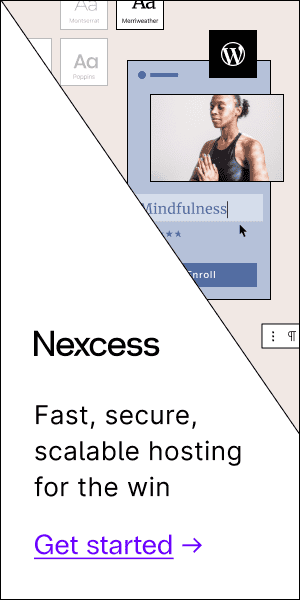Leverage plays a central role in forex trading. It allows traders to control larger positions with smaller deposits, making it easier to access more exposure with limited capital. However, leverage also increases the potential for loss, often at a faster rate than anticipated. To use it effectively, traders need a solid understanding of how it works and the risks it introduces.
This article explains what leverage means in the context of currency trading, how it affects your trading account, and what risk management practices help maintain long-term sustainability.
What Is Leverage?
Leverage in forex refers to the use of borrowed funds to amplify the size of a trade. A broker provides the ability to trade positions much larger than the actual balance in the account.
The amount of leverage offered depends on the jurisdiction, broker policy, and account type. When you open an account for Forex Trading, this setting often becomes one of the first decisions you must make, as it determines how much exposure your capital can support.
Leverage is expressed as a ratio. For example:
- A 50:1 leverage ratio means you can control $50,000 in market value with $1,000 of your own funds.
- A 100:1 ratio means $1,000 allows you to control $100,000.
This magnification works in both directions. It can increase potential gains, but it also magnifies losses.
Margin and How It Relates to Leverage
Margin is the amount of money required in your trading account to open a leveraged position. It acts as collateral for the trade. Higher leverage reduces the required margin, while lower leverage increases it.
For example:
- With 100:1 leverage, the margin requirement is 1% of the trade size.
- With 50:1 leverage, the margin requirement rises to 2%.
Understanding the margin requirement helps you assess how many trades you can open without overextending your account.
Benefits of Leverage in Forex Trading
While leverage increases exposure to risk, it also offers practical benefits when used responsibly:
- Smaller capital requirement – Traders can enter the market without needing large initial deposits.
- Efficient capital usage – Funds remain available for other trades or withdrawals.
- Potential for higher returns – Gains on small price movements become meaningful with larger positions.
These benefits are most relevant in a liquid market like forex, where price movements often occur in fractions of a percent.
Risks Associated With High Leverage
The risks tied to leverage often outweigh the benefits for those who do not manage exposure carefully.
Key risks include:
- Rapid loss escalation – A small unfavorable movement can wipe out a significant portion of your account.
- Margin calls – When your equity falls below the margin requirement, the broker may close your position automatically.
- Emotional trading behavior – High-stakes positions can lead to panic, hesitation, or poor decision-making.
Using too much leverage often leads to account depletion, especially when combined with inconsistent strategy or overtrading.
Example: Leverage Impact on Trade Outcome
Consider two traders with $1,000 in their accounts.
| Trade Scenario | Trader A (10:1 Leverage) | Trader B (100:1 Leverage) |
| Position Size | $10,000 | $100,000 |
| Pip Movement | -50 pips | -50 pips |
| Loss per Trade | $50 | $500 |
| Account Balance After | $950 | $500 |
This example illustrates that, while both traders faced the same market movement, the one with higher leverage lost ten times more. The risk profile changed dramatically, even though the market behavior did not.
How to Manage Leverage Risk
Controlling risk involves a combination of strategic decisions, technical awareness, and strict capital management. Here are practical ways to limit the dangers associated with leverage:
- Use Lower Leverage Ratios
- Select a leverage setting that matches your risk tolerance. For beginners, ratios between 5:1 and 20:1 often provide a better balance between risk and potential reward.
- Set Stop-Loss Orders
- These allow trades to close automatically when the market moves against your position. Proper stop-loss placement is essential for protecting account capital.
- Limit Position Size
- Avoid overexposing your account by trading sizes that require excessive margin. Smaller positions offer more control and flexibility.
- Monitor Margin Level
- Track the ratio of equity to used margin. If this ratio falls too low, you risk triggering a margin call.
- Avoid Trading Around High-Impact News
- Sudden price spikes can lead to slippage and unexpected losses, especially with leveraged positions.
- Keep Cash Reserves
- Maintain a buffer in your account for drawdowns and volatile market conditions. Avoid trading with all available capital.
Key Terms to Understand
| Term | Description |
| Leverage Ratio | The multiple by which your account balance is amplified |
| Margin Requirement | The percentage of the trade value you must hold in your account |
| Margin Call | A broker request for more funds or position closure due to insufficient equity |
| Equity | The current value of your account, including unrealized profits/losses |
| Free Margin | The amount of capital available to open new positions |
Understanding these terms helps you interpret platform metrics and make better-informed decisions.
Leverage Settings Across Jurisdictions
Regulatory agencies often impose limits on maximum leverage to protect retail traders.
| Region | Typical Retail Leverage Cap |
| United States | 50:1 (majors), 20:1 (minors) |
| European Union | 30:1 (majors), 20:1 (others) |
| Australia | 30:1 |
| Asia/Middle East | Often higher, up to 500:1 |
Although some regions permit higher leverage, using the maximum allowed setting rarely aligns with sustainable risk management.
Building a Sustainable Trading Plan
Leverage should serve your strategy—not define it. To build a responsible approach, focus on:
- Consistent trade sizing
- Risk-reward calculations for every setup
- Trading with discipline, not emotion
- Reviewing performance and adapting based on data
By placing emphasis on decision-making and risk control, traders can reduce the negative impact of leverage, even when trading volatile currency pairs.
Final Thoughts
Leverage offers a tool for increasing position size and making efficient use of capital, but it also introduces significant risk. Managing this risk requires discipline, knowledge, and a clear plan. Before applying leverage to your account for forex trading, it’s essential to understand both the potential gain and the speed at which losses can accumulate.
Avoid treating high leverage as a shortcut to faster returns. Instead, use it sparingly, backed by risk controls and careful monitoring. With a measured approach, traders can maintain long-term account health and reduce the risk of premature loss.







